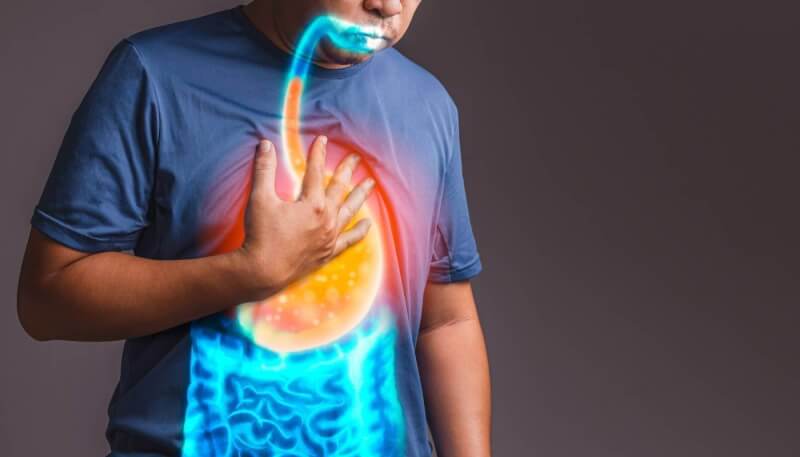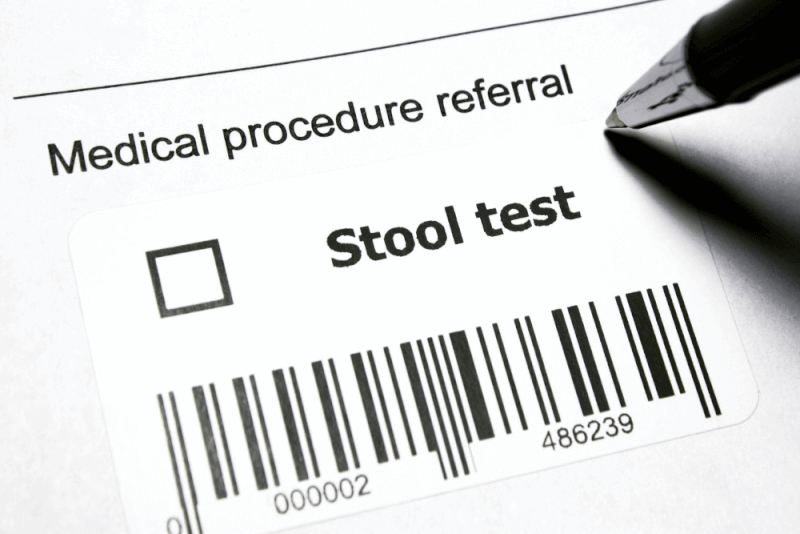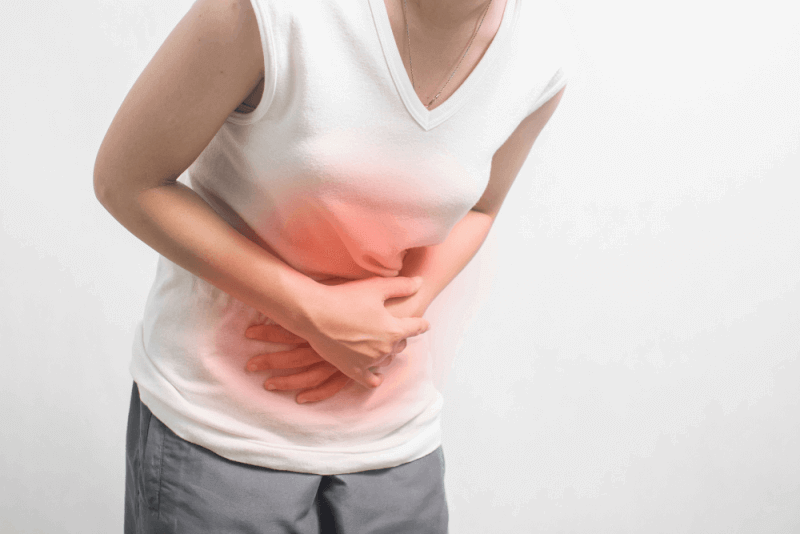30-Second Summary
- Reflux occurs when stomach acid flows back into the esophagus.
- Symptoms include chest burning, heartburn, bitter taste in the mouth, vomiting, coughing, hoarseness, and throat pain.
- The most common causes are obesity, pregnancy, smoking, alcohol, and certain medications.
- Treatment options include lifestyle changes, medication, and surgery.
What is Reflux?
Commonly known as reflux, gastroesophageal reflux is the backflow of stomach acid into the esophagus. Although the exact prevalence in the population is not well known, it is estimated that about 20% of people experience reflux symptoms at some point in their lives.
Reflux occurs almost equally in men and women, although it may be temporary in some individuals. Even though reflux can sometimes resolve on its own, the problems it causes can significantly impact patients' quality of life.
The backflow of stomach acid into the esophagus damages the mucus layer at the lower part of the esophagus. This injury causes a burning sensation behind the chest in patients.
Reflux in Children
Reflux in children is increasingly common. Since the symptoms in children differ from those in adults, diagnosis is often difficult. Symptoms in children include irritability, nausea, weight loss, or failure to gain weight.
If reflux in children is not treated, there may be a significant decrease in their quality of life. Untreated childhood reflux can lead to allergies, asthma, recurrent ear infections, and pneumonia.
What is Atypical Reflux?
Atypical reflux is a subset of gastroesophageal reflux disease. It is one of the more common issues, with a prevalence of 10% to 20% in Western countries. However, due to the availability of over-the-counter medications, it is believed that the actual number of patients may be much higher.
The symptoms of atypical reflux differ from those of typical reflux, which is why it is classified separately. In these patients, the inner lining of the esophagus becomes swollen, causing a sensation of a lump in the throat.
Symptoms of Atypical Reflux
The symptoms of atypical reflux differ from those of typical reflux. Because the symptoms of atypical reflux resemble those of other conditions, it is more challenging to diagnose than typical reflux. The symptoms of atypical reflux include:
- Non-cardiac chest pain: When patients complain of recurring chest pain of varying intensity, cardiac causes should first be ruled out. If the chest pain is not related to cardiac issues, atypical reflux should be considered. It should also be noted that chest pain due to atypical reflux is more common in women.
- Pulmonary symptoms: Pulmonary symptoms, which are part of atypical reflux, are often mistaken for respiratory diseases. This is because stomach acid can enter the lungs, leading to chronic cough and frequent upper respiratory infections. In some patients, asthma-like symptoms may also occur.
Common symptoms: The most common symptoms of atypical reflux include burning of the sinuses and throat due to stomach acid. Additionally, patients may experience throat pain and hoarseness. A lump in the throat sensation caused by inflammation of the hypopharynx may also occur.
What is a Reflux Attack?
Medically referred to as an acid reflux attack, a reflux crisis involves intense pain, vomiting, fever, or difficulty breathing, accompanied by pain and gastrointestinal bleeding that does not subside with antacids or other medications.
This situation requires urgent medical attention. If the symptoms do not improve within a few days, worsen, or suggest an underlying cause, a specialist should be consulted without delay.
Symptoms of a Reflux Attack
The symptoms of a reflux attack may include:
- Persistent vomiting
- Blood or brown spots in vomit
- Difficulty swallowing
- Pain when swallowing
- Loss of appetite
- Bloody stools
- Black stools
- Unexpected weight loss
What are the Symptoms of Reflux?
The symptoms experienced by patients due to the relaxation of the stomach valve, causing stomach acid to flow back into the esophagus, include:
- Allergic asthma,
- Tooth decay,
- Chronic sinusitis,
- Bloating,
- Belching,
- Bad breath,
- Bitter taste in the mouth,
- Weight loss,
- Regurgitation of food particles,
- Chest burning,
- Heartburn,
- Stomach burning.
Stomach acid may also enter the windpipe, causing the following symptoms:
- Excessive snoring,
- Sleep disorders,
- Nighttime asthma attacks,
- Feeling of something stuck in the throat,
- Coughing,
- Hoarseness,
- Throat pain.
Symptoms of Reflux in Babies
Reflux is a common condition in babies, especially those younger than 3 months. Reflux in babies is expected to resolve completely between 12 and 18 months. If symptoms persist, a specialist should be consulted. The symptoms of reflux in babies include:
In babies older than 12 months, spitting up is a symptom of reflux. While it may not cause discomfort in some babies, it can cause pain and trigger attacks in others.
If there is damage to the esophagus, babies may have difficulty swallowing and, as a result, may refuse to eat. Additionally, babies may be irritable during feeding, which is also a symptom.
Bringing up liquid during burping and hiccups is another symptom of baby reflux.
Babies with reflux often struggle to gain weight. On the other hand, vomiting can also lead to weight loss.
Additionally, symptoms of baby reflux include arching their back, frequent coughing, gagging, choking, feeling of chest burning, and frequent disruption of sleep.
Criteria for Diagnosing Reflux
When a patient presents to a doctor with one or more symptoms of reflux, the doctor will prescribe proton pump inhibitor (PPI) medications to alleviate the symptoms. Patients must use these medications for 1-2 weeks. After this period, the patient is re-evaluated. If the symptoms subside during the medication period but return after stopping the medication, the patient is diagnosed with reflux.
Another method used to diagnose reflux is 24-hour pH monitoring. In this method, a small device is inserted through the nose and placed at the entrance of the stomach. This device measures the pH levels at specific points in the esophagus over 24 hours.
Another method used to diagnose reflux is a barium esophagram. In this method, patients drink barium while their esophagus is visualized.
The final method used to diagnose reflux is gastroscopy. Gastroscopy, an endoscopic imaging method, can also diagnose reflux.
Treatment Methods for Reflux
The most effective treatment for reflux is lifestyle changes. With these changes, most patients can be treated without the need for medication.
For some patients, lifestyle changes alone may not be sufficient. Medication may also be necessary. These medications are used to suppress stomach acid.
Finally, surgical options are available for treating reflux. In this option, the muscle at the stomach valve is strengthened to prevent stomach acid from flowing back into the esophagus.
Reflux Diet
Reflux can often be treated with lifestyle changes. Patients need to pay particular attention to their diet and lifestyle. First, patients should reduce the portion sizes of their meals. In addition to reducing portion sizes, they should also increase the frequency of their meals.
Heavy meals should be avoided. Spicy, fatty, fried, and acidic foods should not be consumed. Chocolate and carbonated drinks should also be avoided.
In addition to losing excess weight, patients should avoid smoking and alcohol consumption. Consuming very hot or cold foods can damage the esophagus, so they should be avoided. After eating, patients should wait at least 3 hours before lying down.
Similarly, exercise should not be done immediately after eating. Tight clothing around the waist should be avoided. Therefore, belts and corsets should not be worn. The head of the bed should be elevated by 15-20 cm so that the head is above the chest. It is important to prevent the stomach from bending after meals.
Reflux Surgery
Reflux surgery is the last treatment option for reflux. The goal of reflux surgery is to tighten the lower part of the esophagus to prevent stomach acid from rising.
Summary of the Surgery
Duration of Surgery: 1-2 hours
Type of Anesthesia: General
Hospital Stay: 1-3 days
Return to Work: 1-6 weeks
Differences Between Reflux and Gastritis
The most significant difference between reflux and gastritis is that gastritis is caused by a bacterium called Helicobacter. On the other hand, reflux is simply the backflow of stomach acid. The symptoms of reflux and gastritis are similar, so advanced tests are needed to diagnose them.
What Helps Reflux?
Certain foods can help reduce reflux symptoms. The first of these foods is oatmeal. The high fiber content of oatmeal makes it easy to digest.
This helps the digestive system function more efficiently. Another food that helps with reflux is fish. Rich in Omega-3, fish helps alleviate reflux pain. Other beneficial foods include:
- Celery,
- Cabbage,
- Bananas,
- Broccoli,
- Boiled potatoes.
- Fiber-rich foods
- Apples
- Ginger
- Cucumbers
- Chamomile tea
- St. John's wort oil
- Cheese
- Couscous
- Brown rice
- Whole grains
- Sweet potatoes
- Beets
- Asparagus
- Green beans
Is Yogurt Good for Reflux?
Under normal circumstances, consuming foods with high fat content can exacerbate reflux. Yogurt is one of these high-fat foods. However, low-fat products, often referred to as diet yogurt, can be consumed. Aside from this, yogurt consumption has no curative effect on reflux.
Reflux Pillow
These wedge-shaped pillows are used not only by reflux patients but also by those with sinus congestion or snoring issues. Reflux pillows, which help elevate the upper half of the body, come in different sizes and can be made from various materials.
The reason reflux symptoms worsen at night is that stomach acid can more easily flow into the esophagus. This often causes patients to wake up frequently with a cough or a choking sensation.
Reflux pillows keep the head higher than the stomach, which, aided by gravity, reduces the amount of stomach acid that can reach the esophagus. In some cases, they can prevent stomach acid from reaching the esophagus altogether.
How Should Reflux Patients Eat?
There are certain foods that reflux patients should consume and others they should avoid. Foods that reflux patients should include in their diet include:
- Soy milk,
- Skim milk,
- Cream-free milk,
- Low-fat yogurt,
- Low-fat or fat-free milk,
- Lean and well-cooked red and white meat,
- Fish,
- Eggs,
- Grains,
- Low-acid fruits,
- Vegetable oils,
Foods That Worsen Reflux
Reflux patients should avoid or limit certain foods, as they can increase stomach acid production and worsen symptoms.
Foods that should be avoided in a reflux diet include:
- Coffee
- Onions
- Smoking
- Garlic
- Chocolate
- Alcohol
- Spicy foods
- Fried foods
- Carbonated drinks
- Tomato paste
- Sour foods
- Tomatoes

















